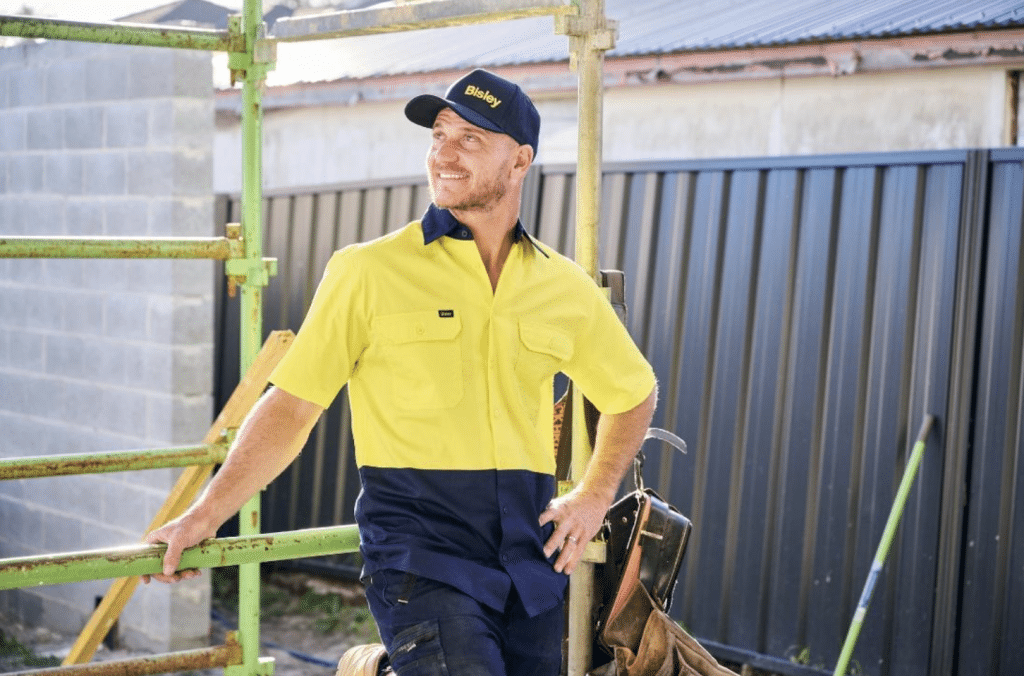Workwear is crucial for professionals in demanding environments like construction sites, warehouses, and industrial settings. It should balance comfort and durability, allowing freedom of movement and breathability. Smart choices in fabric, fit, and design features, such as ripstop cotton blends, reinforced stitching, and moisture-wicking technology, contribute to resilience and comfort. Practical aspects like ventilation, flexibility, and weather-appropriate layering also play a role. Investing in workwear becomes a tool for success, not just a uniform.
In the modern workplace, appropriate workwear is not just about following dress codes; it’s about ensuring safety, promoting productivity, and enhancing comfort. The evolution of workwear from basic protective gear to multifaceted garments designed for specific needs mirrors advancements in workplace standards. For employees in physically demanding jobs, selecting the right work uniform for men can mean the difference between a productive day and a challenging one. Historically, workwear began with simple leather aprons in ancient times and has now evolved into ergonomically designed gear tailored to various professions.
The Importance of Ergonomic Design
Ergonomic design in workwear focuses on the synergy between apparel and user movement, aiming to reduce physical strain and workplace accidents. By contouring to natural body movements, ergonomically designed garments help reduce fatigue and increase safety. Heavy lifting and repetitive tasks can take a toll on the body in industries like construction. Here, ergonomically crafted clothing with strategic padding and support becomes invaluable. Companies prioritizing such design elements often report a significant reduction in workplace injuries, showcasing the benefits of thoughtful apparel design in strenuous environments.
- Choosing the Right Materials
The choice of material is crucial in workwear, as it directly affects comfort and durability. Cotton is renowned for its breathability and comfort, while polyester is known for its durability and resistance to wear and tear. Technological advancements have led to new generation fabrics featuring moisture-wicking textiles, ensuring dryness and comfort in harsh conditions. These smart fabrics adapt to environmental changes, providing an optimal balance of comfort and protection regardless of the challenges of the work environment.
Impact of Climate and Environment
Climate significantly influences workwear selection, with hot climates favoring lightweight, breathable fabrics to prevent overheating and cooler climates requiring insulated clothing for warmth. Technologies such as temperature-controlled textiles offer versatility and enable wearers to adjust to varying temperatures seamlessly. For professionals working in highly variable weather conditions, strategic layering with adaptable clothing ensures they remain comfortable and protected throughout their shifts. Understanding the environmental demands of a job is crucial for selecting appropriate workwear that enhances both performance and safety.
Understanding Workwear Certifications
Workwear certifications provide a benchmark for safety and performance standards. Organizations like the Occupational Safety and Health Administration (OSHA) set guidelines that guarantee that protective clothing meets recognized safety standards, ensuring consistent quality across the industry. Familiarizing oneself with these workwear safety standards can significantly impact employee safety and satisfaction. Wearing certified gear not only complies with industry requirements but also reassures employees of their well-being. This compliance is especially crucial in high-risk industries like construction and manufacturing, where safety cannot be compromised.
Tips for Longevity and Maintenance
Ensuring the longevity of workwear involves a combination of proper care and regular maintenance. This begins with following manufacturer-recommended washing instructions to preserve fabric integrity. Regular inspections for damage such as tears and frays are essential, as addressing these early can prevent more significant problems. Simple repairs, like sewing a torn seam or patching a hole, significantly extend the life of garments. By investing time in maintenance routines, businesses can reduce long-term costs and ensure that their employees always have functional gear at their disposal.
Adapting Workwear for Different Industries
Each industry has unique requirements regarding workwear. For instance, construction workwear needs to include reinforced materials for durability and reflective strips for visibility, while healthcare uniforms require fabric that is easy to clean and resists contaminants. Innovative design in workwear is crucial for meeting industry demands. Companies can enhance job satisfaction and efficiency by providing employees with the best protection and comfort, incorporating new technologies and industry challenges.
Conclusion: Making Informed Decisions
Employers in the workwear industry must make informed decisions to ensure their teams are equipped with appropriate gear for their roles. Factors like ergonomic design, material choice, environmental adaptability, and safety standards should be considered. Continuous research and development, such as sustainable workwear practices, will push the industry towards more advanced solutions. The future of workwear lies in innovation that respects human necessity and environmental sustainability.
